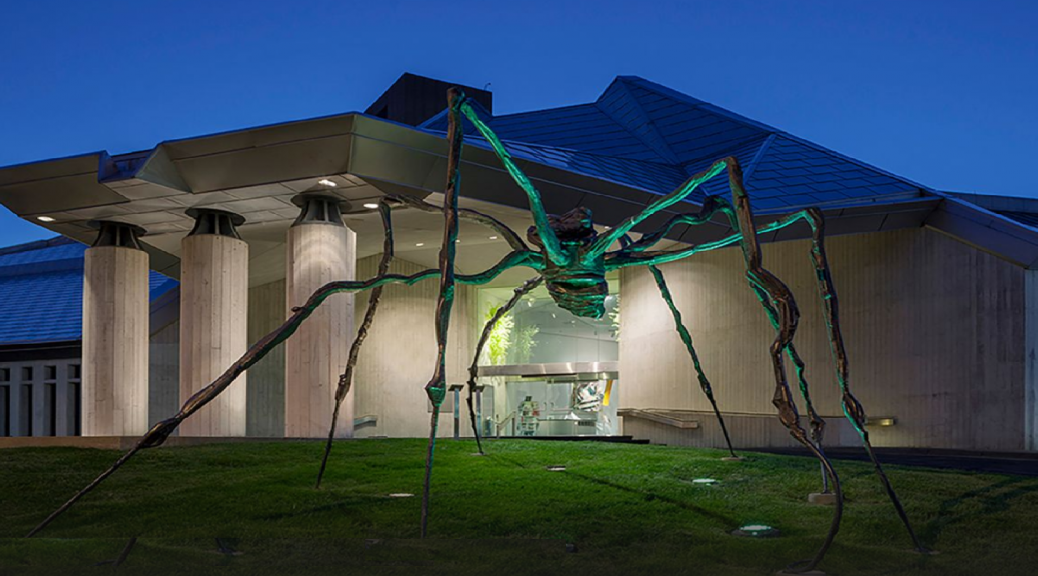In a sprawling Midwest city that conceals hints of Art Deco, Terra Cotta and Gothic Revival amidst its glass sky scrapers, Kansas city has one more secret to reveal, the Kemper Museum of Contemporary Art. First opened twenty six years ago, the building was designed by Latvian American architect Gunnar Birkerts whose work was influenced by the 1930’s International Modernism design work of Finnish architect Alvar Aalto.
This relatively new building is Missouri’s first and largest contemporary art museum that hosts a permanent collection of international works ranging from Jackson Pollock, Willem de Kooning, Robert Motherwell, Robert Rauschenberg, Jasper Johns, Jim Dine, Tom Otterness, Helen Frankenthaler, David Hockney and a Louise Bourgeois sculpture at the front entrance. The massive bronze work by Bourgeois titled ’Spider,’ measures 11 ft high and over 20 ft wide. Cast in 1997, it was added to the museum’s collection that same year thanks to a gift from the William T. Kemper Charitable Trust, UMB Bank, n.a., Trustee.
The permanent collection initiated by Bebe and Crosby Kemper was a gift to their art foundation that includes countless popular post war and current artists. However, the museum does not settle with it’s art star celebrities, but also promotes new artists and local talent to bridge the contemporary collection with visitors in its Midwest community. The museum will typically host an average of ten special exhibitions featuring established and emerging artists that last year included Alex Katz and Liza Lou.
The Museum staffs’ objective is to stimulate understanding through dialogue and to foster appreciation of both modern and contemporary art in their Midwest communities. Significant works of art are presented as educational resources through curatorial selection and educational programs. By building on a strong permanent collection of contemporary works, the museum strives to promote the vitality, complexity, and unfolding patterns of modern art. Special exhibitions are curated to represent national and international aesthetic as well as cultural diversity. In its educational programs of lectures, workshops with visiting artists, tours, demonstrations and performances the Museum attempts to reach a community of art enthusiasts and young budding talents.

Kemper Museum of Contemporary Art hosts exhibitions, installations, lectures, workshops, and other creative programs, free for all ages. To read more about upcoming exhibitions, visit their website at https://www.kemperart.org .


